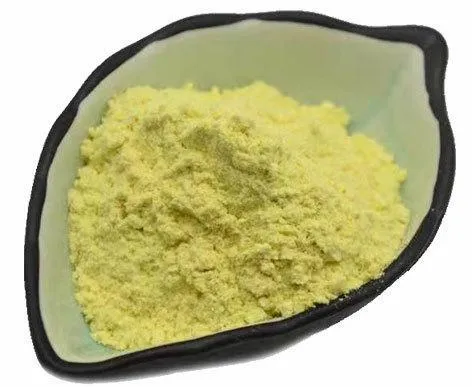Warning: Undefined array key "title" in /home/www/wwwroot/HTML/www.exportstart.com/wp-content/themes/1198/header.php on line 6
Warning: Undefined array key "file" in /home/www/wwwroot/HTML/www.exportstart.com/wp-content/themes/1198/header.php on line 7
Warning: Undefined array key "title" in /home/www/wwwroot/HTML/www.exportstart.com/wp-content/themes/1198/header.php on line 7
Warning: Undefined array key "title" in /home/www/wwwroot/HTML/www.exportstart.com/wp-content/themes/1198/header.php on line 7
- Afrikaans
- Albanian
- Amharic
- Arabic
- Armenian
- Azerbaijani
- Basque
- Belarusian
- Bengali
- Bosnian
- Bulgarian
- Catalan
- Cebuano
- China
- China (Taiwan)
- Corsican
- Croatian
- Czech
- Danish
- Dutch
- English
- Esperanto
- Estonian
- Finnish
- French
- Frisian
- Galician
- Georgian
- German
- Greek
- Gujarati
- Haitian Creole
- hausa
- hawaiian
- Hebrew
- Hindi
- Miao
- Hungarian
- Icelandic
- igbo
- Indonesian
- irish
- Italian
- Japanese
- Javanese
- Kannada
- kazakh
- Khmer
- Rwandese
- Korean
- Kurdish
- Kyrgyz
- Lao
- Latin
- Latvian
- Lithuanian
- Luxembourgish
- Macedonian
- Malgashi
- Malay
- Malayalam
- Maltese
- Maori
- Marathi
- Mongolian
- Myanmar
- Nepali
- Norwegian
- Norwegian
- Occitan
- Pashto
- Persian
- Polish
- Portuguese
- Punjabi
- Romanian
- Russian
- Samoan
- Scottish Gaelic
- Serbian
- Sesotho
- Shona
- Sindhi
- Sinhala
- Slovak
- Slovenian
- Somali
- Spanish
- Sundanese
- Swahili
- Swedish
- Tagalog
- Tajik
- Tamil
- Tatar
- Telugu
- Thai
- Turkish
- Turkmen
- Ukrainian
- Urdu
- Uighur
- Uzbek
- Vietnamese
- Welsh
- Bantu
- Yiddish
- Yoruba
- Zulu
Σεπ . 12, 2024 08:25 Back to list
Propylene Glycol - Chemical Properties, Uses, and Safety Information
Propylene Glycol An Overview
Propylene glycol, a synthetic organic compound with the chemical formula C3H8O2, is a colorless, odorless liquid that is hygroscopic and miscible with water, acetone, and chloroform. Due to its low toxicity and versatility, propylene glycol is widely used across various industries, ranging from food and pharmaceuticals to cosmetics and industrial applications.
Chemical Properties and Production
Propylene glycol belongs to a class of compounds known as glycols, which are diols or polyols characterized by the presence of two hydroxyl (–OH) groups. It is produced through the hydration of propylene oxide, a compound derived from petrochemical sources. The process typically involves two main methods catalytic hydrogenation, where propylene oxide reacts with water under high pressure, and non-catalytic methods, which involve direct hydration.
The physicochemical properties of propylene glycol lend it unique advantages over other solvents and additives. It has a low vapor pressure, making it stable under various conditions, and a low freezing point, which enables its use in applications that require resistance to freezing.
Applications in Various Industries
One of the most prominent uses of propylene glycol is in the food industry, where it serves as a food additive (E1520). It is utilized as a humectant, solvent, and stabilizer in a variety of food products. Its ability to retain moisture helps to maintain the freshness and texture of food items, while also enhancing flavor extraction.
pubchem propylene glycol

In the pharmaceutical sector, propylene glycol is frequently employed as a solvent for oral, injectable, and topical medications. Its safety profile has earned it the designation of “generally recognized as safe” (GRAS) by the Food and Drug Administration (FDA), relative to other solvents. Additionally, propylene glycol finds use in the formulation of personal care products such as lotions, creams, and shampoos, where it acts as a moisturizer and contributes to product stability.
Beyond its role in food and pharmaceuticals, propylene glycol is widely used in industrial applications. It serves as an antifreeze agent in coolants and refrigeration systems, and it is an important ingredient in hydraulic fluids, de-icing solutions, and paints. Its low toxicity makes it suitable for applications where human exposure may occur, such as in food processing equipment.
Environmental and Safety Considerations
While propylene glycol is considered safe for various uses, it is important to handle it properly. Exposure through ingestion, inhalation, and skin contact should be minimized to maintain safety. The compound is biodegradable, posing a lower environmental risk than many other petroleum-derived chemicals.
Conclusion
Propylene glycol is a versatile and widely-used compound with applications that span multiple industries. Its low toxicity, stability, and functional properties make it an essential ingredient in food, pharmaceutical, and industrial applications. As industries continue to evolve, the demand for safe and effective compounds like propylene glycol will remain strong, highlighting its significance in our daily lives.
Latest news
-
Certifications for Vegetarian and Xanthan Gum Vegetarian
NewsJun.17,2025
-
Sustainability Trends Reshaping the SLES N70 Market
NewsJun.17,2025
-
Propylene Glycol Use in Vaccines: Balancing Function and Perception
NewsJun.17,2025
-
Petroleum Jelly in Skincare: Balancing Benefits and Backlash
NewsJun.17,2025
-
Energy Price Volatility and Ripple Effect on Caprolactam Markets
NewsJun.17,2025
-
Spectroscopic Techniques for Adipic Acid Molecular Weight
NewsJun.17,2025

